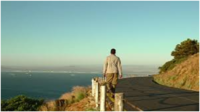Last Updated on June 14, 2022 by themigrationnews

Author: Channel 4 News.
Narrator: Jamal Osman.
Setting: Sub-Sahara Africa.
Length: Thirteen Minutes.
Background
It is an investigative documentary on the dangers faced by migrants using the ‘Southern’ migration route to seek better living standards in the same continent. The southern migration route is a path followed by migrants from both east and west Africa fleeing war and suffering while seeking better living conditions. The East African-Southern route is utilized by individuals from war-torn countries in the region as well as people fleeing injustice and better living conditions. Immigrants are mostly from South Sudan, Ethopia, Djibouti, Eritrea, Sudan and Democratic Republic of Congo. It goes through Dare Salam, Lusaka, Harare and Johannesburg.
Western-Southern route includes nations such as Nigeria affected by Boko Haram, Mali, Cameroon affected by the Anglo- Cameroon war and Niger. The route goes through Kaunda, Bangui, Lusaka, Harare and finally Johannesburg(Alberola, 2017). The destination is South Africa which has seen an acceptance policy since collapse of South Africa and the presidency of Nelson Mandela. Owing to the liberation of the country many immigrants arrive seeking education and work permits.
One such immigrant is Jamal Osman who has been a world-renowned media correspondent and has made world-class documentaries while at British Broadcasting Corporation and Channel Four News. He is award winning journalist on various films such as; Somali- ‘My bloody country’, Rehab Nightmare and On the road to South Africa: A migrant’s story with Jamal Osman. He is recommended as the best investigative Sub-Saharan African journalist and sought out by many media houses. Osman runs a parallel investigative journalism career (Channel 4 News , 2022).
The Exodus
We are introduced to a group of immigrants from Ethiopia who have been travelling for thousands of miles and frightened to cross illegally. Jamal Osman a Channel 4 News correspond entrecounts his journey as a refugee escaping civil war in warlord Somalia. He had to escape to Ethiopia then Kenya and finally made his way to South Africa. Osman had embarked on retracing his journey and spent three weeks doing it and meeting countless immigrants on the perilous journey.
Osman from his crossing to Kenya made his way to Tanzania and crossed to Mozambique using the Ruvuma river. The correspondent recounts, the risks crossing the Ruvuma such as being robbed by the boat owners or pirates. Custom officials are accused of ditching illegal immigrants on is land and leaving them for the dead. This highlights the poor training of these officials as well as poor detention conditions and lack of knowledge on Global Compact for Migration goals. The gap thus should be filled by international migration officials such as International Organization for Migration.
Upon crossing the Ruvuma, they make it to a small town with an immigrant and migration center. A beautiful couple who fell in love while leaving the town are in a dilemma. The lady Aziza had filed an asylum request to the west and was successful but ended up with a child of an Ethiopian immigrant. The United Nations Human Rights Council grants Aziza and the daughter asylum but the man who I believe does not have knowledge of the opportunity of family reunion refuses to sign a consent form.
Unlike other African migration paths, most of the transportation and accommodation to the South African border is decent. Osman the correspondent joins a group of Somali immigrants trying to cross a border fence and leaves them to check on them the next day. Jamal Osman highlights it is way easier to get to the system than in Europe and thus worth the risk. The African Union and international migration organizations should invest in encouraging easier migration between African countries. The west African block of model countries (ECOWAS) mandates federalization of economic, political and social models and philosophy and hence can be considered as a good example of a successful migration model.
Making a Home as an Illegal Migrant
The group of Somali immigrants who crossed the border wall made it safe and sound and are joined by correspondent Osman. Unlike Osman seventeen years ago South Africa has an established Somali business community and they will most likely settle faster with the help of family and countrymen. The trust Somalis have earned makes it easier for migrants to settle and acquire permits. A good example is a Somali businessman who is named Mahammud Machile who hosts immigrants as well as many South African ordinary citizens.
Osman traces his journey to Cape Town where he settled into an ordinary job which was faced with difficulties. He was a chips factory marketing man and made literally just above the minimum pay and was forced to consider other alternatives. The misery felt by a migrant which I have experienced is clearly brought out as he has to earn a living and buy his way to full working or business rights. Osman unlike many who were repatriated was lucky to acquire asylum and opportunities to the United Kingdom.
The transition to residency or citizenship was a challenge as Osman without help from family or immigration organizations finds hell and thus has two spend two years working. Many citizens of the nation are unfriendly and thus he is traumatized until he learns of an asylum opportunity to the United Kingdom. Gradually he works to world class journalism and recounts his journey. In the United Kingdom he finds it much easier and assimilates aided by an existing Somali Diaspora and local immigration organizations.
A theme that Osman experienced firsthand is Xenophobia and discrimination in South Africa unlike the United Kingdom. Despite Somali and South Africa being in the same continent, historical factors such as apartheid have created an ethnocentric society in the hearts of both white and black. There is a phobia of a takeover by a foreign race, other nationalities and other regions of the country. Natal province is a good example of an existing feeling of autonomy hence the power of the Zulu King and politicians like the controversial yet feared Jacob Zuma.
In a summary, I recommend constant monitoring of immigrants in the country as well as creation of bilateral agreements and finally inclusion of African countries to the global resettlement scheme. Pioneered by United Nations Human Rights Council (UNHRC), the resettlement scheme should involve African countries in the incorporation of refugees. Few good examples are of Kenya and closing down of the legendary Kakuma camp. Finally, I would like to thank God for like Osman I was once a refugee in Kakuma camp.

Benedict Kuol is a GRDFT Global Compact for Migration postgraduate certificate graduate as well as a finance major from Strathmore University. He aims to excel in the GRDFT research internship and better his writing skills.
